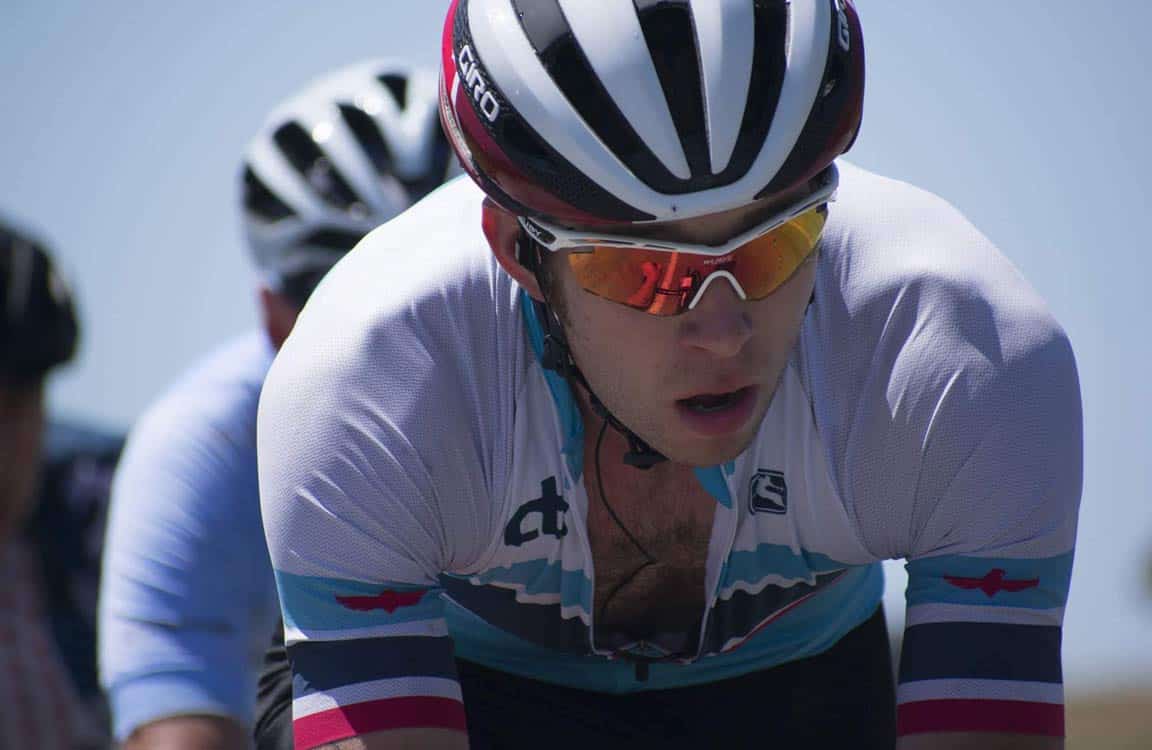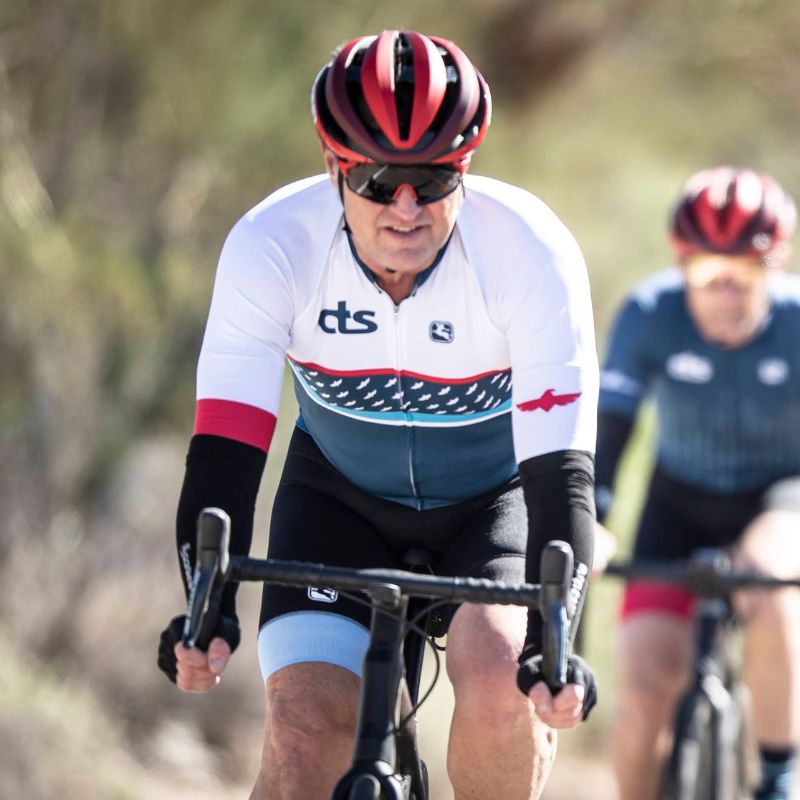
5 Steps for Highly-Effective Cycling Workouts
By Chris Carmichael
CTS Founder and Chief Endurance Officer
Life is complicated, but training should not be. After coaching for decades, I spend less time worrying about the specifics of any particular interval set and more time working with athletes to optimize the execution of training. When athletes stagnate in their training, it’s often due to behaviors that chip away at their ability to execute workouts at a high quality level. No matter what type of workouts are in your training plan, taking the steps below will deliver bigger gains for the effort you’re putting in.
Step 1: Get More and Better Sleep
Whenever an athlete’s training performance starts to falter, my first question is about how they’re sleeping. You can’t train well is you’re not sleeping well or if you’re not getting enough sleep. An athlete who doesn’t prioritize sleep is not really prioritizing his or her training. If you’re dealing with work or lifestyle stresses that are causing you to lose sleep or toss and turn, adjust your training accordingly. You can have a good endurance ride, but shift high-intensity intervals to a day when you’ve had a more normal night of sleep – and preferably two or more.
To get to sleep more quickly, avoid alcohol and get off backlit screens at least two hours prior to bedtime, make the room as dark as possible, bring the room temperature down 68 degrees or cooler, and set a consistent bedtime.
Step 2: Fuel Specifically
Consuming enough total energy is the most important nutritional requirement for training. If you’re not doing that, your food choices won’t make that much of a difference anyway. Assuming you are eating enough to meet the demands of your activity level, and hydrating well, the next step is to fuel specifically for key workouts.
If you are getting set to do a high-intensity interval set, your power output and ability to repeat multiple efforts will improve if you start with high carbohydrate availability. That means eating so that your muscle glycogen stores are full when you start training. It also means you should consume some carbohydrate – or at least not avoid it – in the 60-90 minutes prior to training.
A few years ago, the trend was to train at low to moderate intensity with low carbohydrate availability. More recently, the pendulum swung back to consuming carbohydrate during low- and high-intensity workouts. The newer trend has been to increase consumption of carbohydrate from the traditional 40-60 grams/hour up to 90-120 grams/hour. I’m still not convinced that hourly consumption about about 75 grams/hour is necessary or practical for most amateur cyclists training 8-12 hours/week with a mixed intensity training model. It’s not that I doubt it’s working for elite cyclists, it’s that more is not necessarily better if the engine isn’t running hot enough to need that much carbohydrate fuel.
Step 3: Have a Purpose
You’re not aimlessly wandering through life or your workday, and you can’t aimlessly wander through workouts, either. Each training session has to have a known and explicable purpose, even if that purpose is to spend an unstructured hour riding your bike.
If you’re following a training plan – even if you’re working with a hand-built plan from a coach – you should still know why you’re doing today’s workout. As coaches we can tell when you’re just punching the clock on your intervals and when you’re in sync with the purpose of that workout.
Sometimes athletes lose touch with the overall purpose for their training, too. It’s easy to be motivated and eager when a goal is new and fresh. It gets harder when you’re five months into training and the goal is still 6 months away. Sometimes I have athletes create a Goal Sheet and start each week by reading it – out loud.
► Free Cycling Training Assessment Quiz
Take our free 2-minute quiz to discover how effective your training is and get recommendations for how you can improve.
Step 4: Clear your Mind
This is more important for interval workouts than for long endurance rides. Moderate- and high-intensity intervals require focus, and athletes execute with higher quality and repeatability when they have cleared their minds of everything outside of the workout. Be present. Don’t answer phone calls. No texting. Anything you’re stressed about will still be around when you get done, so take a break from it and focus on your workout. After a great workout, you’re likely to view those stressors in a different light, and you may be in a mindset that is more conducive to creative problem solving.
If you struggle to clear your mind, consider adding a 5- or 10-minute guided meditation to your pre-workout routine.
Step 5: Follow directions!
Seriously. Do the workout as it’s written – whether you’ve designed it, it’s from a static training plan, or it came from your coach. Training is all about accumulating time at intensities that focus stress on a particular part of your physiology. You’re using all energy systems at all intensities levels, just to varying extents. But it’s not just that the 30 minutes at lactate threshold in today’s workout needs to 30 and not 25. It’s that over the course of the week and month and year, those missed opportunities add up.
If you’re like most Time-Crunched Athletes, you have to make the most of the little training time you have. You’ve allocated 60 or 90 minutes for training. Use the full time and execute the intervals to their full durations! Similarly, stick to the recommended recovery periods. The work:rest ratios within interval sets are important to the efficacy of the workout.
Takeaway
You’ll notice, there is no mention of a specific workout in this post. These steps are required for any workout to be highly effective. What you do is often less important than how well you do it and the fact you do it consistently. Your time is valuable, so make the most of it!
► FREE Mini-Course: Learn How to Maximize Your Limited Training Time
Learn step-by-step how to overcome limited training time and get faster. Walk away with a personalized plan to increase your performance.
"*" indicates required fields


Comments 8
Nice article. I would add two more points one is learn the logic of periodicity and the last would be that cyclists no matter what the category should be nice to other cyclist and supportive.
Thanks, good stuff. Question regarding fueling for a workout targeting fat burning (in my book 90-120 minutes in FatMax Zone). Intuitively it feels like these should be done with low carb availability or even in a fasted state? Idea being to rely less on carbs but more on fat for energy? Thoughts?
Good article. I’ve started my CTS Recovery week w/ my CTS Coach Tracey. A 1.5 hr Foundation ride is scheduled for today. I was thinking about going stronger, BUT, my CTS coach knows why this is a recovery week, since she has me doing a VO2 block after the recovery week. So there are LONG TERM reasons for a recovery week vs “selfish”, let’s go HARD w/Power today. Hopefully I’ll hit the VO2 targets in the next block 😀
Thank you,
David
What is the TCC traing plan? I also forgot what FTP stands for?
Over the last 6 weeks I have been following the TCC training plan to a T. I have increased my FTP from 181 (CTS Field Test) to 230 in that time frame. Additionally, I have included Jack Devores “Max Overload for Cyclist” to compliment my TCC training plan as well. Bottom line is that when I am on the computrainer at 6:00AM, the athlete next to me is a 5 time national champion and his name is Brett Melcher. Brett has noticed the difference and has mentioned not only the FTP increase, also the huge increase in w/kg that I am able to produce. All of this is due to the TCC training plan and following the plan in its entirety.
Thanks Chris.👍🇺🇸🚵♂️
Claudio: Thanks for the confirmation. I love messages like this. Our TCC program helps many athletes reach their cycling goals. The next step is direct coaching to integrate all aspects of performance into your life. Have fun!
Chris Carmichael
This is EXCELLENT advice! I’ve been cycling since 1997 and I’ve recently decided to switch from a casual, endurance rider; to a more sportive, trained rider. My goals are not competitive-based, only personal, as I simply want the challenge of getting quantitatively better; meaning, increased power output for a sustained period.
Chris: I appreciate the kind words and glad you enjoy the blog. Good luck with your personal cycling goals for 2019.
Chris Carmichael